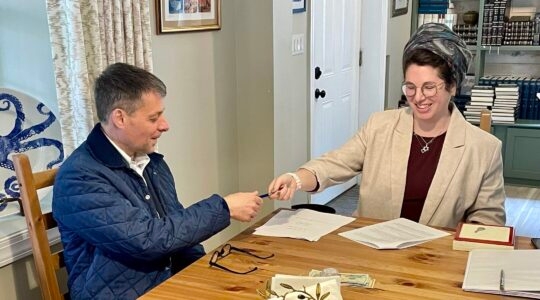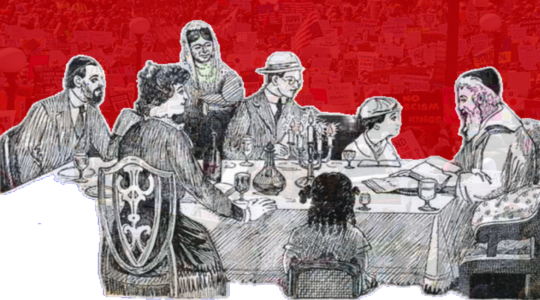It is not at all uncommon these days to daven at an Orthodox shul, where men and women are separated via mechitza, then pedal our feet to the social hall for kiddush where another mechitza, usually of fake shrubbery, guards the separation of the sexes, where neither twain shall meet.
Then, there are the Orthodox weddings. Men and women now enter at some wedding halls via separate doorways. From there, the men stampede to the chatan’s (groom’s) tisch while the women adorn the bride with praise and childhood recollections. As the tisch concludes, the music summons a call to the chuppah. The men and women already know what to do — left side rows for the women, right side for the men.
The ceremony concludes and after a brief respite, we proceed to the dinner where tables are designated for His and Hers and a hulking mechitza awaits.
In a religion that basks in the beauty of marriage and bonding, where did all this separation come from?
In my parents’ generation, Young Israel synagogues held social dances, where husbands and wives danced together, and enjoyed the warmth, fun and even intimacy of holding each other’s hands while in the presence of others doing the same. Today, we in the Orthodox community apologize for that errant era and dismiss the dances as a sha’at hadchak (an emergency measure to preserve the core of religious Judaism).
I recently attended a wedding where couples sat together during the ceremony, sat together during the dinner and, hold your breath, even got to dance together. It was one of the rare occasions where my wife and I remained till the very end, nearly seven hours after the wedding had begun.
While I understand that the cessation of mixed dancing at Orthodox weddings is owed, in part, to the possibility that the wife may be a menstruant (which limits the contact she may have with her spouse), should that not be an issue for the couple to decide?
There is a larger issue here. In the Orthodox world of which I’m a lifetime member, we have created a culture of gender separation even when the halacha (Jewish law) does not require it.
This comes at a time when divorces in the broader Orthodox community are at an all-time high and the adult unmarried population is rising. I am not correlating these challenges exclusively to the expanded separation, but I wonder if we are desexualizing our religion to a dangerous degree.
The Torah is replete with stories of private and even public affection, from Adam getting to “know” Chava (Eve); to Yitzchak bringing Rivka into his late mother’s tent and later “jesting with” (m’tzakhek) her; to Yaakov publicly embracing Rachel even before he introduces himself to his cousin and eventual wife. The examples abound.
There, of course, is the opposite extreme: unlicensed frivolity where touch too often arrives without the other’s permission and where societal norms encourage teenage sex without regard to the emotional scars borne by participants.
Not long ago, however, Judaism embraced the Golden Rule of moderation, one underscored in the Talmud and enshrined by Rambam (Rabbi Moshe ben Maimon). I am not advocating in any way for the removal of mechitzot during prayer. There, our focus should be directed toward strengthening our relationship with God.
But I am suggesting we take heart to the words of author Jack Canfield. “Overcome your barriers,” he said. “You will enjoy more balance, more growth … and more fun.”
In the arenas of bayn adam l’chaveiro (human interaction), it is time for us to take down that wall.
Mitch Morrison is a veteran journalist and actively involved in several Jewish organizations, including serving as vice president of the Union for Traditional Judaism.
The New York Jewish Week brings you the stories behind the headlines, keeping you connected to Jewish life in New York. Help sustain the reporting you trust by donating today.




